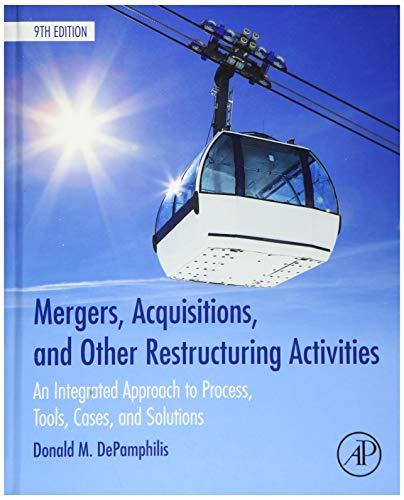In an era in which rapid changes in technologies are reshaping the long-standing business models of most
Question:
In an era in which rapid changes in technologies are reshaping the long-standing business models of most companies, senior managers find themselves having to gaze into the future to anticipate rather than simply react to market changes. The automotive industry is no exception. Those that will survive long term must make educated guesses about what lies ahead in terms of how people will chose private versus public modes of transportation. While the latter has long represented an alternative in areas of high population density, new trends are emerging that represent both a threat and an opportunity to the traditional passenger vehicle.
Among the economic and social developments likely to impact the mode of transportation in high-density affluent areas is the advent of autonomous (or self-driving) cars and ride-hailing services
(like Uber and Lyft).25 Consequently, both firms within the car manufacturing industry and major technology companies are seeking ways to exploit changes in the giant automotive transportation market. Ride-hailing companies using autonomous driving car technology have the potential to substantially erode consumers’ desire to own motor vehicles, particularly in urban areas, and in turn to reduce automakers’ sales and profits.
Automotive executives are keenly aware of the potential for ride-hailing services to reduce the demand for owning or leasing cars in urban areas. However, opportunities for automakers do exist.
Even if the industry’s passenger car sales decline, the number of miles driven by cars can actually increase as cars remain the preferred mode of transportation nationwide. Car companies see the potential to offer paid services to take advantage of all the miles driven by the current fleet of cars, which in the United States exceeds 100 million vehicles. Such paid services could provide a significant source of future income in addition to the more traditional sale of cars and replacement parts.
The future may consist of company-owned autonomous cars constantly shuttling people back and forth rather than simply cars owned by individuals remaining in garages or parking lots a large percentage of each day. Car companies with paid mobility services see themselves earning money on the number of miles driven rather than simply on the actual sale of cars. In recognition of this emerging trend, Ford announced in 2015 that it was increasingly thinking of itself as a mobility company rather than an automotive company.
The growing popularity among consumers of ride-hailing indeed portends a major paradigm shift in the way we travel. But the capital requirements to make it happen are proving to be huge. Uber has been unable to sustain its rapid growth through internal financing. In mid-2016, Uber announced publicly plans to raise billions of dollars from investors and creditors. Smaller competitors such as Lyft acutely aware of the amount of capital required to compete with Uber pursued various options ranging from partnerships to seeking minority investors to sale of the business.....
Discussion Questions:
1. What alternatives to a partnership with Lyft did GM have? Why was a partnership selected as the means of implementing the firm’s strategy to enter the ride-hailing business?
2. Who do you believe benefited most from the partnership (GM or Lyft) and why?
3. In addition to risk sharing, what other motivations existed for GM and Lyft to partner?
4. Speculate as to why GM invested in Lyft rather than other ride-hailing services such as Uber?
5. Of the risk factors mentioned in the case study, which do you believe is the most likely to prevent the realization of the partnership’s vision of achieving a car-hailing network of autonomous driving cars? Explain your answer.
Step by Step Answer:

Mergers Acquisitions And Other Restructuring Activities
ISBN: 9780128016091
9th Edition
Authors: Donald DePamphilis





